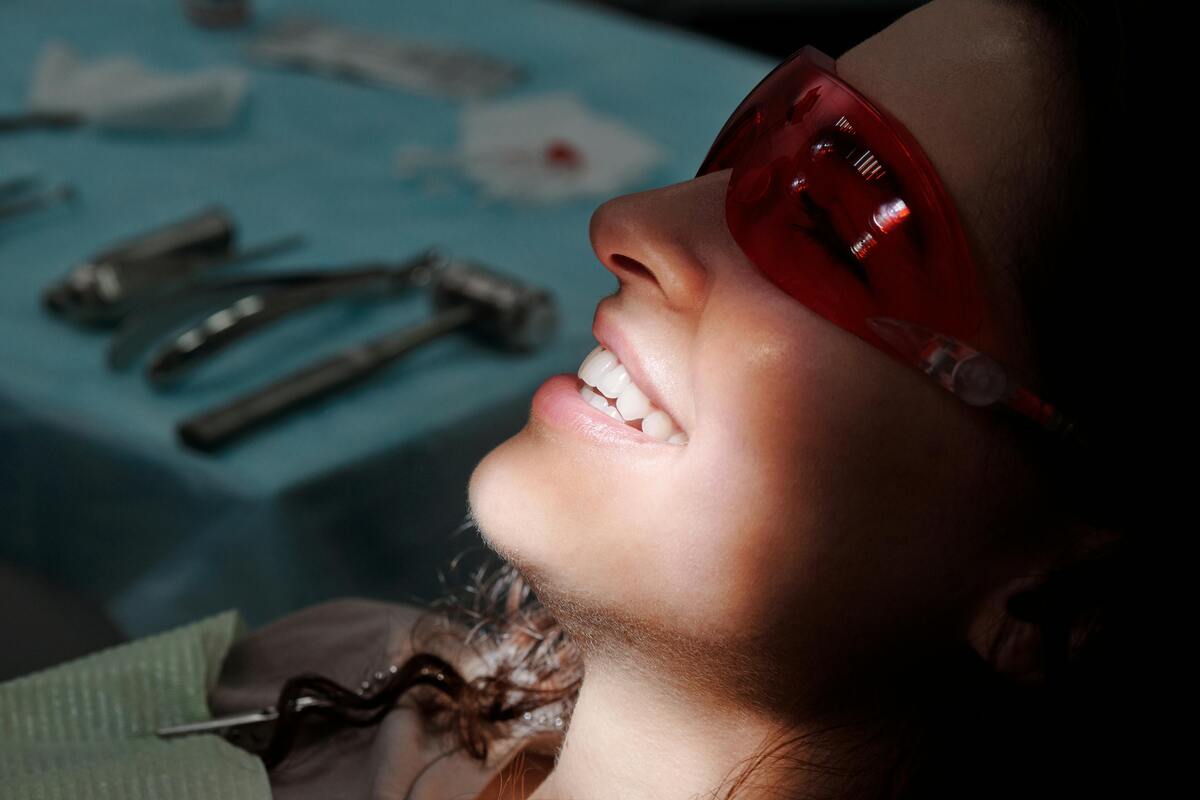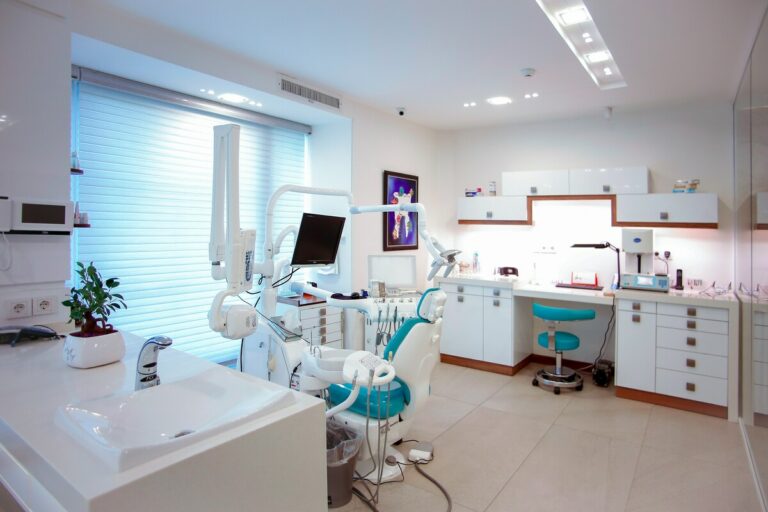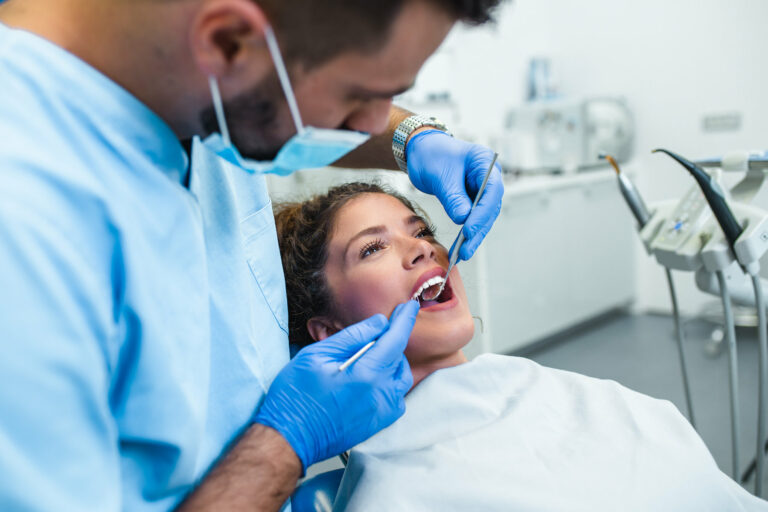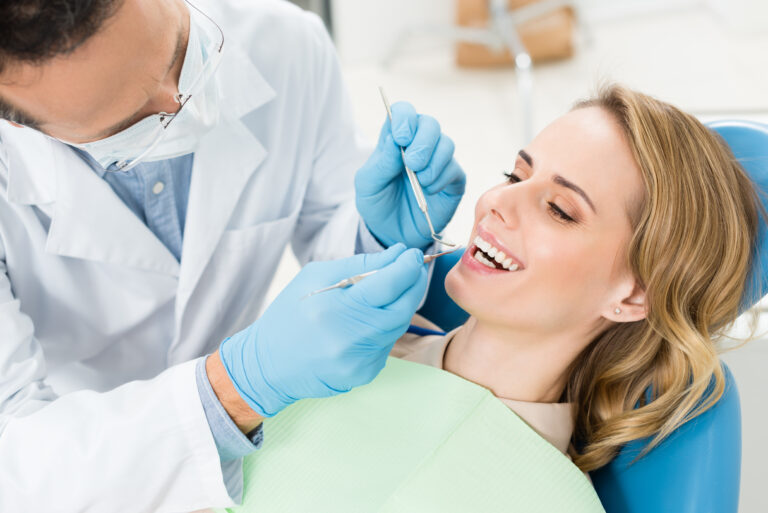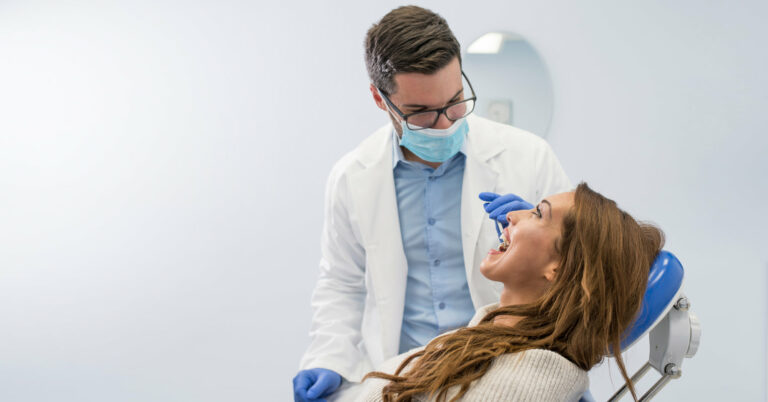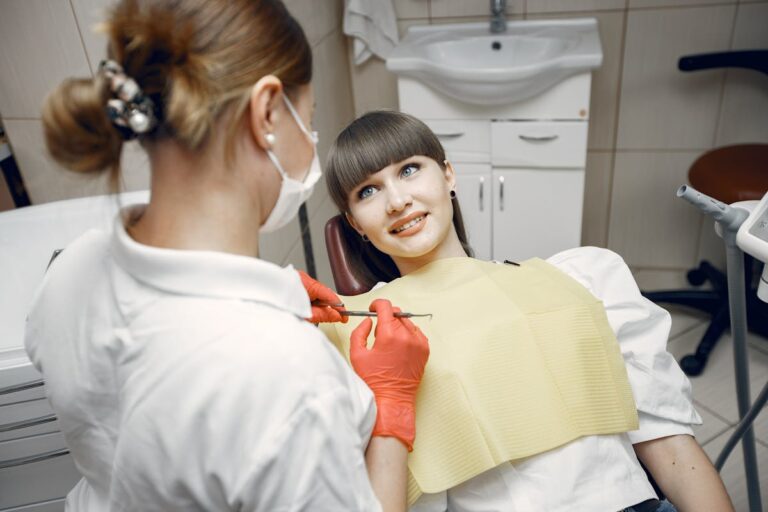Laser Dentistry Technology in Midtown Manhattan: Minimally Invasive Treatment Options
Laser dentistry technology in Midtown Manhattan represents a significant advancement in dental care, offering a range of minimally invasive treatment options. By employing concentrated light beams, these techniques target dental tissues with remarkable precision, minimizing patient discomfort and preserving healthy structures. The approach results in quicker recovery times, reduced bleeding, and a lesser need for anesthesia compared to traditional methods. This shift towards more efficient, patient-friendly solutions in urban dental practices raises intriguing questions about the evolution of dental care.
Understanding Laser Dentistry: How It Works
When examining the mechanics of laser dentistry, it becomes evident that this advanced technology utilizes concentrated beams of light to perform dental procedures with precision. Laser technology operates by generating a focused light beam capable of interacting with dental tissues at a microscopic level. This interaction allows for meticulous control over cutting, vaporizing, or reshaping tissue, ensuring dental precision. Specific wavelengths are selected based on the target tissue, optimizing the effectiveness of the procedure. In soft tissue applications, laser energy coagulates blood vessels, enhancing hemostasis and reducing postoperative discomfort. For hard tissues, lasers facilitate cavity preparation through ablation, minimizing thermal damage. The inherent precision of laser technology in dentistry enables practitioners to execute complex interventions with minimal collateral tissue impact, optimizing patient outcomes.
The Benefits of Laser Dentistry Over Traditional Methods
How does laser dentistry surpass traditional dental methods in efficacy and patient experience? The integration of laser technology in dentistry provides notable advancements in patient comfort and treatment precision. Unlike conventional drills, lasers minimize discomfort by reducing the need for anesthesia and promoting faster healing times. This minimally invasive approach greatly enhances patient comfort, particularly for those with dental anxiety.
Furthermore, laser dentistry offers superior treatment precision. The focused light energy enables dentists to target specific areas with high accuracy, preserving surrounding healthy tissue. This precision reduces the risk of collateral damage and accelerates recovery. Additionally, lasers effectively sterilize the treatment site, decreasing the likelihood of infection. To conclude, laser dentistry represents a paradigm shift, delivering enhanced outcomes and a more favorable patient experience compared to traditional methods.
Common Laser Dentistry Procedures in Midtown Manhattan
Building upon the advantages that laser dentistry offers regarding precision and patient comfort, Midtown Manhattan dental practices are increasingly incorporating this technology into their repertoire of common procedures. Utilization of laser treatments enhances patient comfort through significant pain reduction and less invasive practices, making dental care more accessible. The advanced technology employed in these procedures guarantees precise targeting of affected areas, promoting ideal oral health. A variety of procedures such as soft tissue management, gum reshaping, and periodontal therapy are now performed with lasers, underscoring the diverse application possibilities. This technology supports improved dental hygiene by thoroughly decontaminating treatment areas. The shift towards laser-enabled procedures highlights Midtown Manhattan’s commitment to enhancing patient experience through innovation and all-encompassing care.
Laser Treatment for Cavities: A Painless Alternative
Why consider laser treatment for cavities? The innovative approach of laser cavity treatment offers a significant advancement in dental care by providing a painless dental experience. This technology employs concentrated light beams to precisely remove decayed tissue while preserving healthy tooth structure. The precision reduces the need for anesthesia, minimizing discomfort and anxiety associated with traditional drilling methods.
Moreover, lasers can effectively sterilize the area, decreasing the risk of bacterial infection and promoting faster healing. The absence of vibration and heat generation further enhances patient comfort. Clinicians benefit from enhanced control and accuracy, leading to improved outcomes. As laser technology continues to evolve, its application in cavity treatment represents a paradigm shift towards minimally invasive, patient-friendly dental solutions in Midtown Manhattan.
Managing Gum Disease With Laser Technology
Laser technology offers significant advantages in managing gum disease, particularly through its precision and minimally invasive nature. The procedure’s effectiveness is underscored by its ability to precisely target and remove diseased tissue while preserving healthy gum structures. Additionally, patients benefit from an accelerated healing process, attributed to reduced trauma and decreased inflammation compared to traditional methods.
Laser Treatment Benefits
A notable advancement in dental care, laser treatment offers a multitude of benefits for managing gum disease effectively. This technology enhances patient comfort by considerably reducing the need for invasive surgical procedures and minimizing discomfort during and after treatment. The precision of laser technology allows for targeted removal of diseased gum tissue while preserving healthy surrounding areas, thereby promoting faster healing and reducing treatment time. Additionally, lasers are known to reduce bleeding and swelling, further contributing to a more comfortable patient experience. The targeted nature of laser therapy also decreases the risk of postoperative infections, as the laser acts to sterilize the area. Consequently, laser treatment in dental care represents a paradigm shift, providing a sophisticated approach to managing gum disease.
Procedure Effectiveness
Building upon the numerous advantages offered by laser treatment, its effectiveness in managing gum disease is particularly remarkable. This advanced dental technology provides high procedure reliability, ensuring consistent performance across various clinical scenarios. The precision of laser technology allows for targeted removal of infected tissue while preserving healthy gum structures. This selective eradication contributes considerably to improved treatment outcomes, minimizing damage and promoting ideal periodontal health. Studies indicate that patients undergoing laser procedures exhibit reduced periodontal pocket depths and decreased bacterial levels, indicative of successful treatment. Additionally, the reduced need for anesthesia highlights the minimally invasive nature of this approach. Overall, laser technology in dentistry has emerged as a reliable tool, yielding favorable outcomes in the management of gum disease.
Healing Process Speed
When examining the impact of laser technology on the healing process speed in managing gum disease, it becomes evident that this method considerably accelerates recovery. The utilization of laser technology in dental procedures promotes efficient wound healing by precisely targeting affected areas, minimizing collateral tissue damage. This precision facilitates enhanced tissue regeneration, as it stimulates cellular activity and accelerates the production of new tissue. The photothermal effects of laser treatment contribute to reduced inflammation and decreased bacterial presence, further aiding in swift recovery. Additionally, the minimally invasive nature of laser technology minimizes post-operative discomfort and reduces the risk of infection, which are vital factors in expediting the healing process. Overall, laser technology represents a significant advancement in periodontal therapy, optimizing outcomes through improved healing dynamics.
Cosmetic Enhancements: Teeth Whitening and More
Although often overlooked in discussions of advanced dental procedures, cosmetic enhancements in laser dentistry, such as teeth whitening, represent a significant leap forward in dental aesthetics. Laser technology offers a precise, minimally invasive approach, reducing the risk of gum irritation and enhancing patient comfort. Teeth whitening via lasers allows for uniform light distribution, effectively breaking down stains for a brighter smile with minimal exposure time. Beyond whitening, lasers facilitate cosmetic bonding by preparing enamel surfaces with unmatched precision, ensuring ideal adhesion and longevity of composite materials. This method enhances the esthetic outcomes, providing natural-looking restorations. The integration of laser technology in such procedures underscores a paradigm shift towards more efficient, patient-friendly treatments, aligning with the contemporary demand for both function and form in dental care.
Recovery and Aftercare: What Patients Can Expect
Following a laser dentistry procedure, patients typically experience a recovery phase characterized by reduced discomfort and expedited healing, thanks to the minimally invasive nature of the technology. Laser treatments often result in less tissue trauma, decreasing the necessity for extensive pain management strategies. Patients may experience mild discomfort, which is manageable with over-the-counter analgesics. The reduced need for sutures and decreased bleeding further contribute to a smoother recovery process.
Follow-up care is vital to guarantee ideal healing and to monitor the effectiveness of the procedure. Dentists may schedule follow-up appointments to assess tissue regeneration and address any concerns. Adherence to post-procedural guidelines, such as dietary restrictions and oral hygiene practices, is essential to facilitate the healing process and minimize potential complications.
Choosing the Right Laser Dentistry Professional in Midtown
In selecting an appropriate laser dentistry professional in Midtown, it is essential to systematically evaluate the credentials and certifications that validate their expertise in laser-based treatments. A thorough comparison of available treatment options, including procedural efficacy and patient outcomes, must be conducted to guarantee alignment with individual dental needs. In addition, evaluating the sophistication and capabilities of the laser technology employed by the practitioner is vital, as advancements in laser systems can greatly influence the precision and success of dental interventions.
Evaluating Professional Credentials
How does one effectively assess the professional credentials of a laser dentistry specialist in Midtown? The process begins with credentials verification, confirming the practitioner holds relevant certifications from recognized dental boards. This verification includes confirming the completion of specialized training in laser dentistry. Additionally, evaluating professional experience is essential; it involves examining the duration and scope of the specialist’s practice in the field. Analyzing patient reviews and case studies provides insight into the practitioner’s proficiency and success rate. Moreover, membership in professional organizations, such as the Academy of Laser Dentistry, signifies ongoing commitment to industry standards and continuing education. A thorough assessment of these elements guarantees that the chosen professional is both qualified and experienced in delivering superior laser dentistry services.
Comparing Treatment Options
When selecting the ideal laser dentistry professional in Midtown, it is essential to conduct a detailed comparison of available treatment options, as each can greatly impact outcomes. A cost comparison is a critical factor, considering that pricing for laser treatments may vary considerably based on the specific procedure and the practitioner’s expertise. Effectiveness analysis should be prioritized to assess the success rates and potential benefits of each option. Comparing these metrics involves evaluating patient testimonials, clinical studies, and practitioner credentials. Additionally, consideration of post-treatment recovery times and potential side effects is crucial for informed decision-making. By systematically analyzing these factors, patients can make a well-informed choice, ensuring optimal results and value for investment in laser dentistry services.
Assessing Laser Technology
Selecting the appropriate laser technology is vital when choosing a laser dentistry professional in Midtown. An in-depth assessment of the laser systems employed is important, as it directly impacts laser safety and patient comfort. Professionals should utilize advanced laser devices that adhere to stringent safety standards, minimizing thermal damage to surrounding tissues. The ideal wavelength and pulse duration of the laser are key factors that enhance procedural precision while reducing discomfort. Evaluating the dentist’s experience with specific laser types is essential, as proficiency guarantees effective treatment outcomes. Additionally, the integration of ergonomic designs in laser equipment contributes to patient comfort, allowing for a more relaxed dental experience. Ultimately, selecting the right technology assures an efficient, minimally invasive approach to dental care.
The Future of Laser Dentistry in Urban Settings
As advancements in laser dentistry continue to evolve, urban settings are poised to become the epicenters for integrating this innovative technology into routine dental practices. Urban accessibility plays an essential role in this shift, with densely populated areas providing a fertile ground for rapid adoption and dissemination of cutting-edge dental treatments. Technological advancements in laser systems have enhanced precision, reduced procedural times, and minimized patient discomfort, making these systems highly attractive for urban dental clinics. In addition, urban centers often have the infrastructure to support continued research and development, fostering an environment conducive to ongoing innovation. With increased investment in training and education, urban dental practitioners are well-positioned to harness these advancements, ultimately elevating the standard of care in densely populated regions.
Frequently Asked Questions
How Long Does a Typical Laser Dentistry Procedure Take?
The laser procedure duration typically ranges from 10 to 90 minutes, depending on the complexity of the dental issue. Treatment efficiency results in reduced chair time, minimizing patient discomfort and ensuring a faster recovery compared to traditional methods.
Are Laser Dentistry Procedures Covered by Dental Insurance?
Insurance coverage for laser dentistry procedures varies considerably among providers and plans. Treatment eligibility typically depends on individual policy terms, including whether the procedure is deemed necessary or classified as cosmetic, impacting the likelihood of reimbursement.
What Is the Average Cost of Laser Dentistry Treatments?
The average cost of laser dentistry treatments varies considerably, typically ranging from $300 to $3,000 per procedure. Cost comparison reveals that while initial expenses may be higher, treatment affordability improves due to reduced recovery times and fewer follow-up visits.
Are There Any Potential Side Effects of Laser Dentistry?
Potential side effects of laser dentistry include minor discomfort, swelling, or sensitivity, though laser technology often enhances pain management. It typically accelerates the healing process compared to traditional methods, reducing overall recovery time for patients.
How Soon Can I Eat After a Laser Dentistry Treatment?
Post-treatment guidelines for laser dentistry suggest waiting until numbness subsides before consuming food. Dietary recommendations include soft, non-irritating foods to minimize discomfort and guarantee ideal healing. Adhering to these guidelines can enhance recovery and treatment efficacy.
